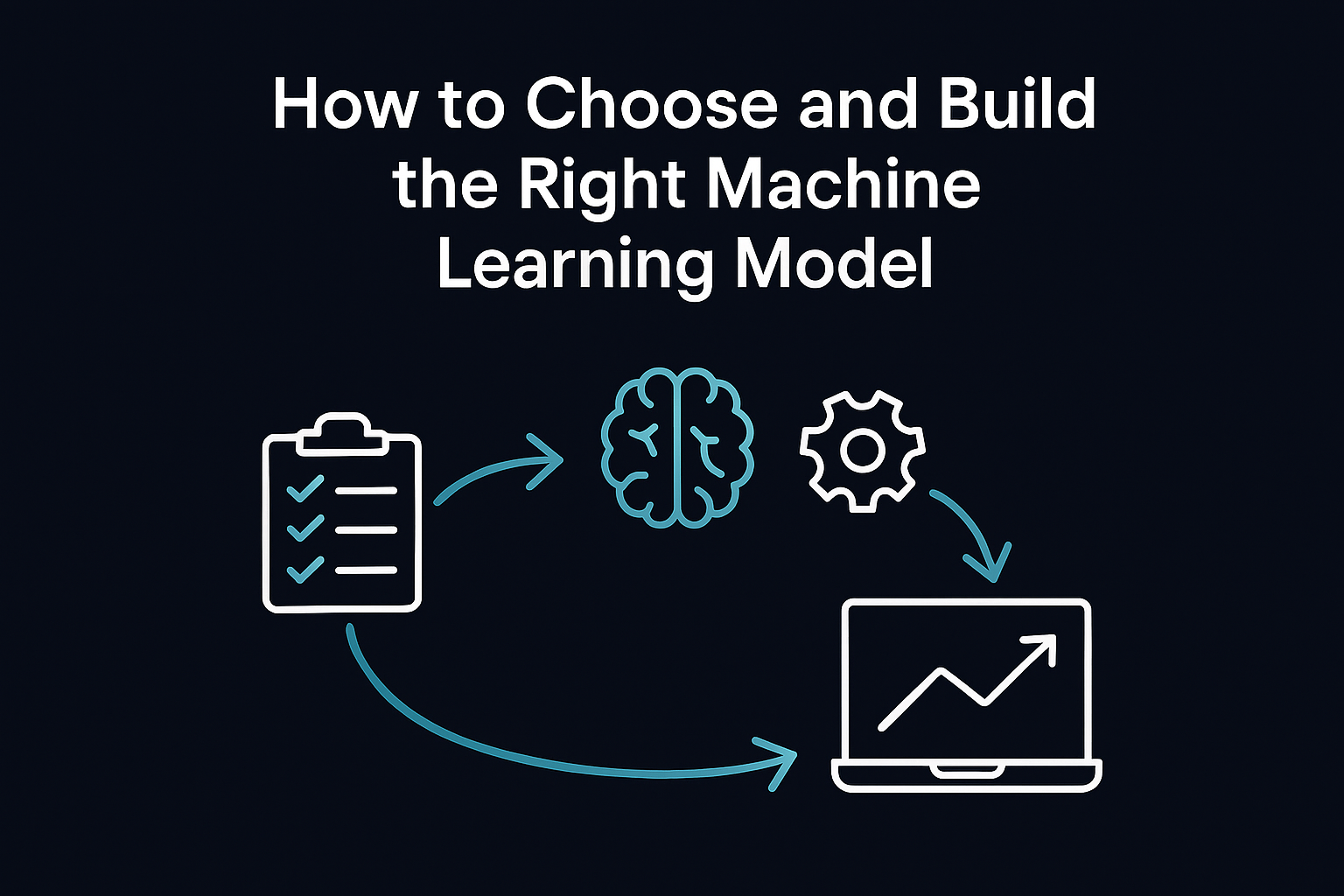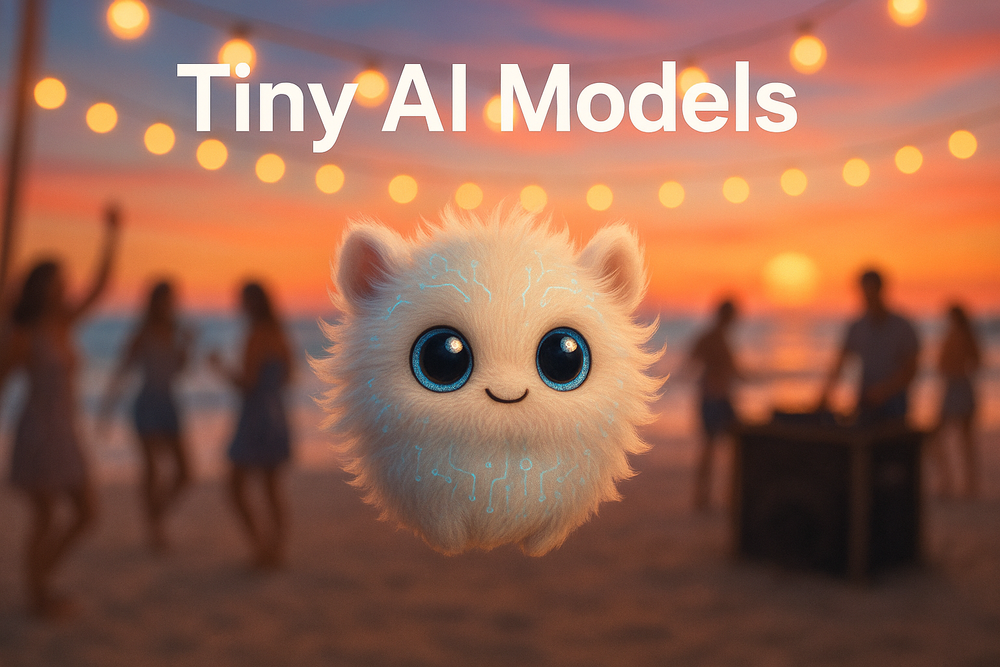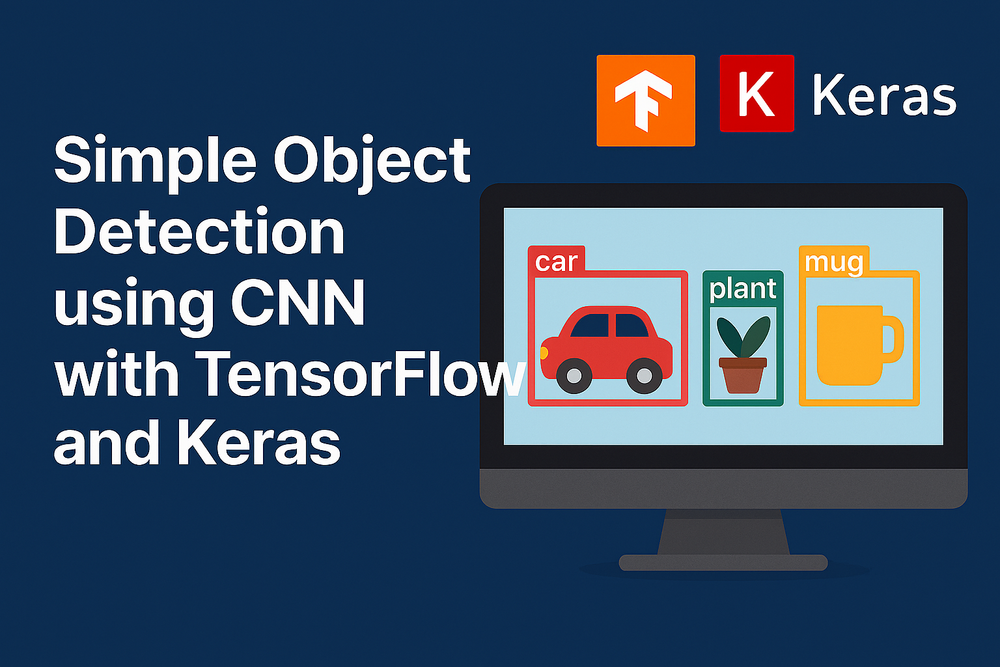Machine learning is an exciting field and a core subset of artificial intelligence. It empowers systems to learn from data and improve over time without being explicitly programmed. This guide will help you understand the different types of machine learning and how to choose the right AI model for your specific needs.
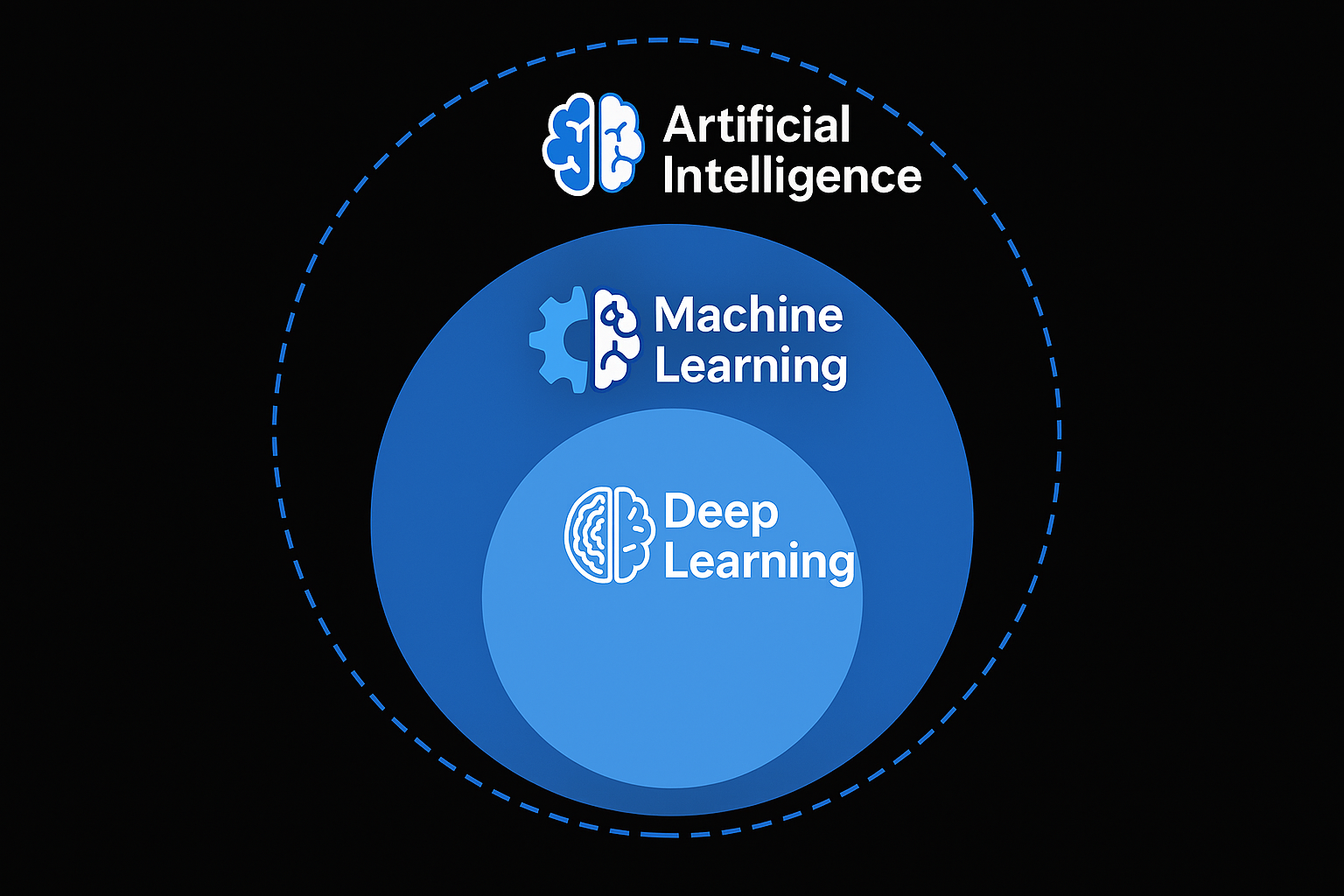
What is Machine Learning?
In 1959, during the 1950s, Machine learning was defined by pioneer Arthur Samuel as "Field of study that gives computers the ability to learn without being explicitly programmed."
On the other hand, Machine learning is a subfield of artificial intelligence that can recognize a visual scene, understand a text written in natural language, or perform an action in the physical world mimicking aspects of human behavior.
What is Artificial Intelligence?
Artificial Intelligence is the ability machine to learn, solve complex tasks that simulate the way intelligent humans solve problems even performing routine actions automatically in daily life.

The main objective of AI is:
- Problem-solving skills: This is a primary goal of artificial intelligence, AI systems are designed to automate routine tasks and assist in complex decision-making, ultimately improving daily life.
- Facilitates Planning: This is one of the principal goals of artificial intelligence. AI supports predictive analytics, data analysis, forecasting, and optimization models to enhance strategic planning and decision-making.
- Obtain General Intelligence: This is a significant goal of artificial intelligence, achievement general intelligence aims to replicate the full range of human cognitive abilities.
- Encourage human-AI collaboration: This is one of the critical goals of artificial intelligence. Collaboration between AI and human intelligence has the potential to enhance productivity, creativity, and decision-making. Advancements in Explainable AI (XAI) promote transparency and trust, allowing humans to better understand AI systems and make more ethical, informed decisions.
What are types of Machine Learning?
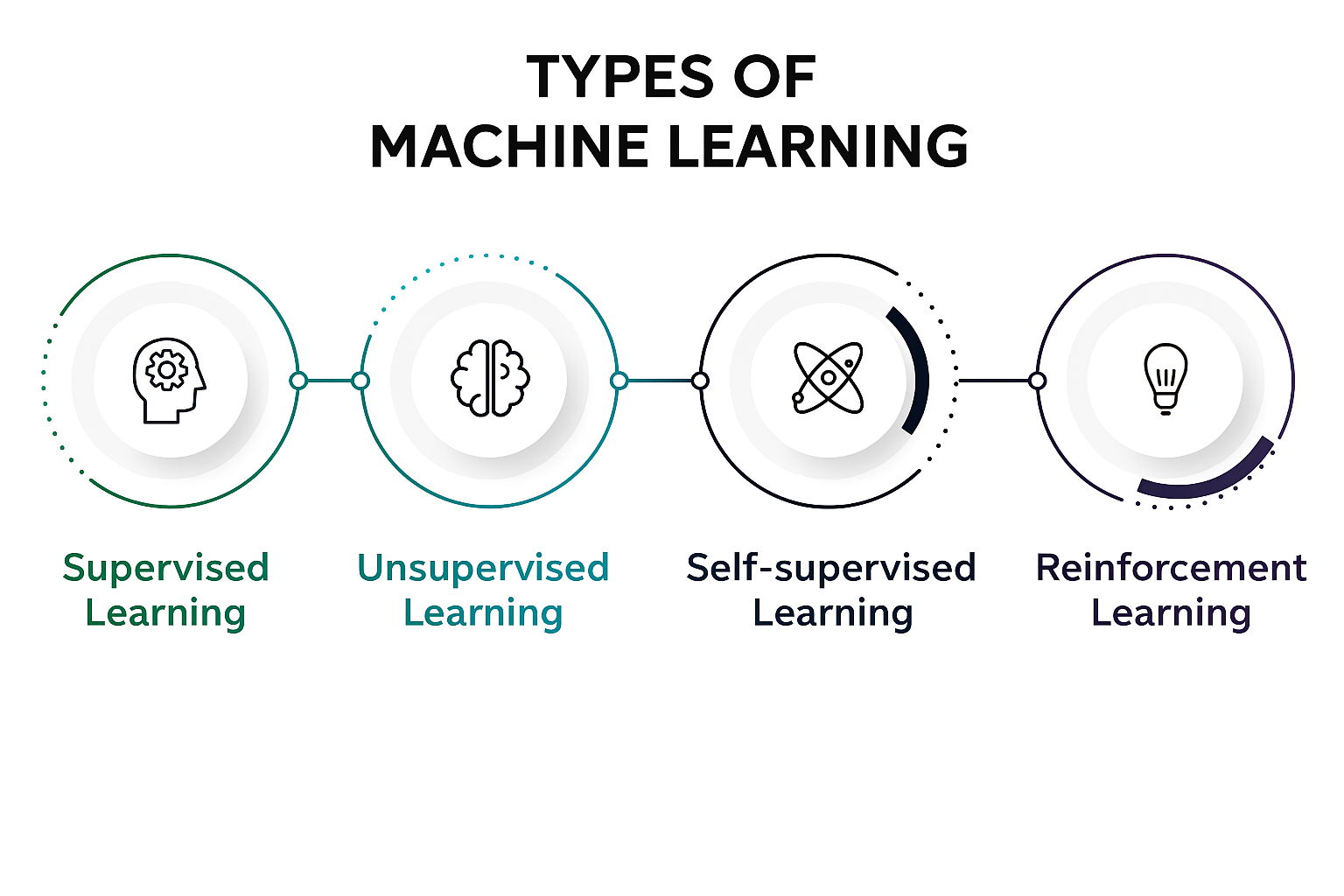
Machine Learning is commonly divided into three main types. Recently, a fourth paradigm known as self-supervised learning has emerged, bridging the gap between supervised and unsupervised approaches by leveraging unlabeled data to generate its own supervision signals. Let's delve into each of these.
- Supervised Learning: The model learns the relationship between input features and their corresponding output labels. It uses labeled data to make predictions on new, unseen data.
- Unsupervised Learning: The model learns from the inherent structure of the data without predefined outputs or correct answers. It identifies patterns, clusters, or associations.
- Reinforcement Learning: An agent interacts with an environment and learns to make decisions by receiving rewards or penalties. The goal is to maximize long-term rewards through trial and error.
- Self-supervised Learning: A subset of supervised learning where the model generates its own labels from the input data. It’s commonly used in representation learning and pretraining large models.
Which Types of Machine Learning Are Right for You?
Nowadays, AI is rapidly advancing and is being integrated into almost all applications. Before applying AI, we often ask some fundamental questions related to the topic, such as: What is an AI model? Why do we use AI models? and How do we choose the right AI model?
In this discussion, we will focus on how to choose the right AI model, because selecting the appropriate model can help our project go further and move faster. We need to answer three key questions:
1, What type of problem do you need to solve?
We have 22 AI common problem types: Classification, Regression, Recommendation, Search Relevance, Information Extraction, Text Summarization, Clustering, Time Series Forecasting, Virtual AI Assistant, Sentiment Analysis, Object Detection, Document Segmentation, Keyword Extraction, Speech Recognition, Machine Translation, Paraphrasing, Named Entity Recognition (NER), Question-Answering, Retrieval-Augmented Generation (RAG), Automated Feature Engineering, Optical Character Recognition (OCR), Textual Entailment.
Each type will be a specific response but It will be split into 2 categories: Supervise learning and Unsupervised learning depending on whether the model is trained with labeled data or not.
- Supervise learning: Classification, Regression, Recommendation, Search Relevance, Information Extraction (IE), Text Summarization, Time Series Forecasting, Sentiment Analysis, Object Detection, Speech Recognition, Machine Translation, Named Entity Recognition (NER), Question-Answering, Optical Character Recognition (OCR), Textual Entailment.
- Unsupervised learning: Clustering, Document Segmentation, Keyword Extraction, Paraphrasing, Automated Feature Engineering, Virtual AI Assistant, Retrieval-Augmented Generation (RAG).
If your problem does not involve prediction, then we should answer a question What is the goal? Clustering will be use for grouping.
Other, we need to predict some of things, continue 2 branch: category (Classification) or number values (Regression).
2, What type of data do you have? We have 3 options type:
- Structured and simpler data: Clearly defined rows and columns, numeric or categorical values. Decision Trees, Logistic/Linear Regression, Random Forest, Gradient Boosting, ...
- Data with intermediate complexity: Sequential or partially structured, may require feature engineering. LSTM (for sequences), ARIMA (for forecasting), LightGBM, CatBoost (for complex tabular data), ...
- highly complex data like images, text, and audio: Unstructured, high-dimensional, requires deep learning. Images: CNNs (e.g., ResNet, EfficientNet). Text: Transformers (e.g., BERT, GPT), RNNs. Audio: WaveNet, Spectrogram-based CNNs
3, What level of interpretability do you need?
- High Interpretability: You need to explain decisions to stakeholders, comply with regulations, or build trust. Decision Trees, Linear Regression, Logistic Regression, Rule-based models.
- Moderate Interpretability: You want a balance between performance and explainability. Random Forests, Gradient Boosting (e.g., XGBoost, LightGBM).
- Low Interpretability: Performance is the top priority, and interpretability is less critical. Deep Neural Networks (CNNs, RNNs, Transformers), Ensemble models with complex interactions.
AI Applications by Problem, Data, and Interpretability
| Application | Problem Type | Data Type | Interpretability | Suggested Models |
|---|---|---|---|---|
| Spam Detection | Classification | Structured | High | Logistic Regression, Decision Tree |
| House Price Prediction | Regression | Structured | Medium | XGBoost, Random Forest |
| Customer Segmentation | Clustering | Structured | Medium | K-Means, DBSCAN |
| Stock Price Forecasting | Regression | Time-Series | Low | LSTM, ARIMA |
| Sentiment Analysis | Classification | Text | Low | BERT, LSTM |
| Image Recognition | Classification | Image | Low | CNNs (ResNet, EfficientNet) |
| Chatbot | Interaction | Text | Low | GPT, RNN, Retrieval-Augmented Models |
| Topic Modeling | Clustering | Text | Medium | LDA, NMF |
| Keyword Extraction | Extraction | Text | Medium | TF-IDF, BERT |
| Machine Translation | Generation | Text | Low | Transformers (e.g., MarianMT, GPT) |

